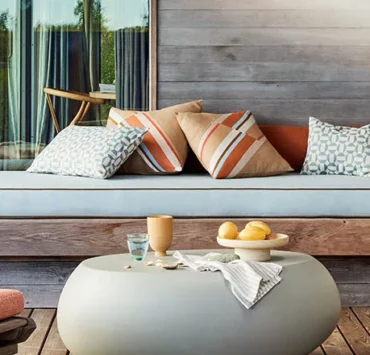Word of mouth is the best marketing tool for many interior designers, who build their business referrals from happy clients — and repeat business from those same happy clients.
For some designers that’s enough to keep their business running successfully. And that’s great.
But most designers need a more comprehensive marketing plan, especially if you want to expand your client base, shift the kind of projects you’re doing or venture into new parts of the country.
I want to make a case for going old school with some of your marketing efforts. We are all inundated with digital messages: ads on social media, ads within the posts of influencers, banner ads, popup ads, video ads, ads that follow us around promoting the same item we bought online 10 minutes ago. Increasingly these ads are AI-generated.
And we ignore most of them, if they even register with us at all.
Older forms of marketing hold similar risks, too. Let’s face it: We’re overwhelmed by all forms of advertising, from the billboards we drive by every day to displays clogging the aisles at the grocery store.
Yet because digital advertising has become dominant, more traditional methods can capture our attention just because they’re less common these days. They aren’t without drawbacks, but they can be effective.
* Direct mail: I don’t know about you but the flow of mail to my house has slowed dramatically in the past couple of years. Some days, I don’t get any mail at all, and I immediately recycle or shred much of what does arrive.
A well-designed direct mail postcard will occasionally catch my eye, prompt me to set it aside and even follow up. I’m most inclined to open personally addressed cards and letters that arrive in envelopes because they are so rare.
You can send truly personalized notes to past or potential clients or, if you’re mailing to a broader audience, you can add a short, personal note to a postcard or letter. Highlight a recent award or a successful project in the recipient’s area or showcase testimonials from clients.
It may even be worth it to hire someone with nice handwriting to address the pieces, rather than printing addresses. It’s time consuming, I know. But it’s also personal — and that stands out.
* Phone calls: No, not automated robocalls to a huge database of phone numbers. I’m talking about personal calls to past and potential clients. To past clients, these can be check-in calls six months or a year after a project is completed. Ask how the space is feeling. Could it benefit from a tweak or two? Do they have questions about maintaining any upholstery pieces or surfaces? Are they ready to start tackling other parts of their home or a vacation place? As you wrap up, thank them again for their business and ask if they would be so kind as to recommend you to others in their circle.
When reaching out to prospective clients, you can let them know about an upcoming showhouse where you’ve designed a space and invite them to attend or just reach out to see if they have additional questions about your firm or proposal. Keep it short, friendly and low-key.
With so many texts and phone calls now automated and AI-generated, a call from a real, genuine, caring person can be truly welcome.
* Print: As someone who started her career in print newspapers and magazines, I find the decline of print heartbreaking. Still, print has its place, and many communities have successful, glossy lifestyle publications that appeal to higher-end consumers. Try a run of monthly ads or work with the editor to provide regular how-to decorating or trend-watching articles that will introduce you to readers while providing them with helpful information.
* TV: For the first time, more U.S. households are streaming TV rather than watching via cable. That complicates TV advertising even more. One solid place to spend your TV dollars remains morning news and entertainment blocks, when many households are catching up on what’s happening before they head out for their days. As with print publications, you can think beyond advertising to partner with a local TV station to provide regular home and garden tips. It’s a great way to introduce yourself to your community and become a trusted design source.
If your marketing plan feels stale, try some of these “new-old” ways of letting people know how talented you are — and how you can transform their homes and lives.



